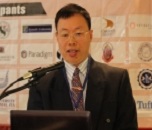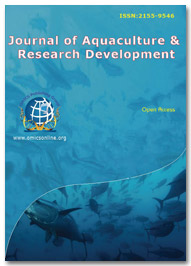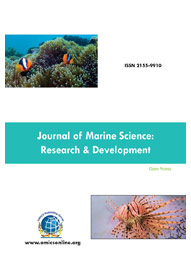Theme: New developments and challenges for the future: Era of Water Microbiology
Water Microbiology 2016
ConferenceSeries Ltd is an amalgamation of Open Access Publications and worldwide International conferences and events. Established in the year 2007 with the sole aim of making the information on Sciences and technology "Open Access", ConferenceSeries Ltd publishes 700 online open access scholarly journals in all aspects of Science, Engineering, Management and Technology journals. ConferenceSeries Ltd has been instrumental in taking the knowledge on Science & technology to the doorsteps of ordinary men and women. Research Scholars, Students, Libraries, Educational Institutions, Research centres and the industry are main stakeholders that benefitted greatly from this knowledge dissemination. ConferenceSeries Ltd also organizes 1000 International conferences annually across the globe, where knowledge transfer takes place through debates, round table discussions, poster presentations, workshops, symposia and exhibitions.
ConferenceSeries Ltd is organizing International Conference on Water Microbiology during July, 18-19, 2016, in Chicago, USA. The theme of the conference is “New developments and challenges for the future: Era of water microbiology”. This congress is expecting audience such as experts from Microbiology, Water Technologist, Water Microbiologist, Instrumentation technology, Applied microbiology, and doctors, experts from Academics as well as Industrialists.
Entrepreneur Investments Meet: Description
A key ingredient in successful entrepreneurship is self-knowledge. (Water Microbiology-2016) aims to bring together all existing and budding bio entrepreneurs to share experiences and present innovations and challenges in microbiological community. Each year, over a million companies are started in the world with about 5–10 of them classified as high technology companies. Turning ideas into business ventures is tricky and the opportunity-recognition step is critical in new venture creation. This gestalt in the entrepreneur's perception of the relationship between the invention and final product is refined into a business model that describes how the venture will make money or provide an appropriate return to the potential investors. Biological science is complex and rapidly changing and requires a specialized knowledge to understand the value of the innovation and its competitive position in the industry. Although life scientists are typically the founders of biotech companies, studies have shown that the most successful high tech startups are founded by a team of two to three individuals with mixed backgrounds, substantial industry experience and a very clear market and product focus at founding. This three day community-wide conference will be a highly interactive forum that will bring experts in areas ranging from structural microbiology to signaling pathways to novel therapeutic approaches to the scientific hub. In addition to our outstanding speakers, we will also showcase short talks and poster presentations from submitted abstracts. The speakers will discuss how microbes can be engineered to report using computational inputs from their local environment. This session will include combined efforts of cutting edge synthetic biology research to highlight the current state, challenges and future of engineered microbial communities
Track 1- Water Analysis
It is needless to accentuate the paramount of Water in our life. Without water, there is no life on our planet. We require water for different purposes. We require water for imbibing, for industries, for irrigation, for swimming and fishing, etc. Water for different purposes has its requisites as to composition and purity. Each body of Water needs to be analysed on a customary substructure to substantiate to congruousness. The types of analysis can vary from simple field-testing for a single analyse to laboratory predicated multi-component instrumental analysis. The quantification of water/ aquatic quality is a very exacting and time-consuming process, and a sizable voluminous number of quantitative analytical methods are utilized for this Purport.
Relevant Conferences:
World Congress on Microbiology, November 28-29, 2016 Valencia, Spain; International Conference on Water Microbiology & Novel Technologies- July 18-20, 2016 Chicago, USA; 5th Microbiologists Annual meeting -August 15-17, 2016 Portland, USA; 2nd world congress on Beneficial Microbe -September 23-25, 2016 Phoenix, USA; Microbial Physiology conference- September 29-30, 2016; London, UK; Infectious Diseases Conference- Oct 3-5, 2016 Vancouver, Canada; International Conference on Medical Parasitology 2016 , October 17-19, 2016, Houston, USA; International Conference on Human Papillomavirus – October 20-21, 2016, Chicago, USA; Clinical Microbiology Conference- October 24-26, 2016 Rome, Italy; 7th World Congress on Applied Microbiology, November 10-12, 2016 Istanbul, Turkey, Microbiology Society , International Union of Microbiological Societies , American Society for Microbiology USA, Federation of European Microbiological Societies European Union, and The Royal Society of Pathologists UK.
Track 2-Water Testing
Water testing are instrumental in designating and evaluating the methods and facilities utilized in examining the sundry characteristics of contaminants in Water for health, security, and environmental purposes. These Water testing sanction concerned local regime ascendant entities, Water distribution facilities, and environmental laboratories to test the quality of Water and ascertain safe consumption. arker Kittiwake has developed a Marine Potable Water Test Kits to avail with the help of the current IHR (2005), ILO 178 (2009) and ILO MLC (2006), which enters into force from January 2012. These test kits provide authentic time analysis and simple to perform tests, which require no specialist training. Tests put physical examination of the Water for adequate hardness and the ease of nutrients with a quantification of biological waste and the efficacy of any sterilisation.
Relevant Conferences:
World Congress on Microbiology, November 28-29, 2016 Valencia, Spain; International Conference on Water Microbiology & Novel Technologies- July 18-20, 2016 Chicago, USA; 5th Microbiologists Annual meeting -August 15-17, 2016 Portland, USA; 2nd world congress on Beneficial Microbe -September 23-25, 2016 Phoenix, USA; Microbial Physiology conference- September 29-30, 2016; London, UK; Infectious Diseases Conference- Oct 3-5, 2016 Vancouver, Canada; International Conference on Medical Parasitology 2016 , October 17-19, 2016, Houston, USA; International Conference on Human Papillomavirus – October 20-21, 2016, Chicago, USA; Clinical Microbiology Conference- October 24-26, 2016 Rome, Italy; 7th World Congress on Applied Microbiology, November 10-12, 2016 Istanbul, Turkey, Microbiology Society , International Union of Microbiological Societies , American Society for Microbiology USA, Federation of European Microbiological Societies European Union, and The Royal Society of Pathologists UK.
Track 3-Water Microbiology
Water Microbiology is concerned with the microbes that live in Water, or transferred from one habitat to another by Water. Different group of microbes of concern in Water microbiology are protozoa. The two protozoa of the most concern are Giardia and Cryptosporidium. They live mundanely in the intestinal tract of animals such as beaver and deer. Giardia and Cryptosporidium form dormant forms called cysts during their life cycles. The cyst forms are resistant to chlorine, which is the most form of imbibing Water disinfection, and can pass through the filters utilized in many Water treatment plants. If ingested in imbibing Water they can cause debilitating and protracted diarrhea in humans, and can be life lethal to those people with impaired immune.
Related Conferences:
World Congress on Microbiology, November 28-29, 2016 Valencia, Spain; International Conference on Water Microbiology & Novel Technologies- July 18-20, 2016 Chicago, USA; 5th Microbiologists Annual meeting -August 15-17, 2016 Portland, USA; 2nd world congress on Beneficial Microbe -September 23-25, 2016 Phoenix, USA; Microbial Physiology conference- September 29-30, 2016; London, UK; Infectious Diseases Conference- Oct 3-5, 2016 Vancouver, Canada; International Conference on Medical Parasitology 2016 , October 17-19, 2016, Houston, USA; International Conference on Human Papillomavirus – October 20-21, 2016, Chicago, USA; Clinical Microbiology Conference- October 24-26, 2016 Rome, Italy; 7th World Congress on Applied Microbiology, November 10-12, 2016 Istanbul, Turkey, Microbiology Society , International Union of Microbiological Societies , American Society for Microbiology USA, Federation of European Microbiological Societies European Union, and The Royal Society of Pathologists UK.
Track 4-Drinking Water
Imbibing Water emanates from a variety of sources including public Water System, private wells, or bottled Water. Ascertaining safe and salubrious imbibing Water may be as simple as turning on the tap from an EPA-regulated public Water system. Other aquatic sources may need a filter, a check on Water fluoridation, or an inspection to ascertain a septic tank is not too proximate to a private well. It is consequential to ken where imbibing Water emanates from, how it’s been treated, and if it's safe to imbibe.
Related Conferences:
World Congress on Microbiology, November 28-29, 2016 Valencia, Spain; International Conference on Water Microbiology & Novel Technologies- July 18-20, 2016 Chicago, USA; 5th Microbiologists Annual meeting -August 15-17, 2016 Portland, USA; 2nd world congress on Beneficial Microbe -September 23-25, 2016 Phoenix, USA; Microbial Physiology conference- September 29-30, 2016; London, UK; Infectious Diseases Conference- Oct 3-5, 2016 Vancouver, Canada; International Conference on Medical Parasitology 2016 , October 17-19, 2016, Houston, USA; International Conference on Human Papillomavirus – October 20-21, 2016, Chicago, USA; Clinical Microbiology Conference- October 24-26, 2016 Rome, Italy; 7th World Congress on Applied Microbiology, November 10-12, 2016 Istanbul, Turkey, Microbiology Society , International Union of Microbiological Societies , American Society for Microbiology USA, Federation of European Microbiological Societies European Union, and The Royal Society of Pathologists UK.
Track 5 - Water Microbiology Indicator
Environmental designators has defined as physically, chemical, biological or socio-economic measures that best represent the key elements of an involute ecosystem or environmental issue. A be speaker is embedded in a well -developed interpretative framework and has meaning beyond the quantification it represents. For a bespeaker to be efficacious it must provide a true measure of a component of the ecosystem. Cull of efficacious designators is best achieved by developing conceptual models of the ecosystem and utilizing these to pinpoint bespeakers that provide the required information.
Related conferences:
World Congress on Microbiology, November 28-29, 2016 Valencia, Spain; International Conference on Water Microbiology & Novel Technologies- July 18-20, 2016 Chicago, USA; 5th Microbiologists Annual meeting -August 15-17, 2016 Portland, USA; 2nd world congress on Beneficial Microbe -September 23-25, 2016 Phoenix, USA; Microbial Physiology conference- September 29-30, 2016; London, UK; Infectious Diseases Conference- Oct 3-5, 2016 Vancouver, Canada; International Conference on Medical Parasitology 2016 , October 17-19, 2016, Houston, USA; International Conference on Human Papillomavirus – October 20-21, 2016, Chicago, USA; Clinical Microbiology Conference- October 24-26, 2016 Rome, Italy; 7th World Congress on Applied Microbiology, November 10-12, 2016 Istanbul, Turkey, Microbiology Society , International Union of Microbiological Societies , American Society for Microbiology USA, Federation of European Microbiological Societies European Union, and The Royal Society of Pathologists UK.
Track 6- Regulating Water and Waste Water
Environmental designators has defined as physically, chemical, biological or socio-economic measures that best represent the key elements of an involute ecosystem or environmental issue. A be speaker is embedded in a well -developed interpretative framework and has meaning beyond the quantification it represents. For a speaker to be efficacious it must provide a true measure of a component of the ecosystem. Cull of efficacious designators is best achieved by developing conceptual models of the ecosystem and utilizing these to pinpoint be speakers that provide the required information.
Related Conferences:
World Congress on Microbiology, November 28-29, 2016 Valencia, Spain; International Conference on Water Microbiology & Novel Technologies- July 18-20, 2016 Chicago, USA; 5th Microbiologists Annual meeting -August 15-17, 2016 Portland, USA; 2nd world congress on Beneficial Microbe -September 23-25, 2016 Phoenix, USA; Microbial Physiology conference- September 29-30, 2016; London, UK; Infectious Diseases Conference- Oct 3-5, 2016 Vancouver, Canada; International Conference on Medical Parasitology 2016 , October 17-19, 2016, Houston, USA; International Conference on Human Papillomavirus – October 20-21, 2016, Chicago, USA; Clinical Microbiology Conference- October 24-26, 2016 Rome, Italy; 7th World Congress on Applied Microbiology, November 10-12, 2016 Istanbul, Turkey, Microbiology Society , International Union of Microbiological Societies , American Society for Microbiology USA, Federation of European Microbiological Societies European Union, and The Royal Society of Pathologists UK.
Track 7- Sanitary Importance Microbes
The increment agricultural utilization of animal waste has brought the hygienic aspects into focus for land application of cattle dung is a reduced pathogen content Recently, the strategy for l and application of sewage sludge was reported (To obviate health risks (for humans as well as grazing animals) and smell nuisance from the sewage sludge, different methods for a copacetic sludge management have been researched. The most prevalent methods for slurry treatment (stabilization) are aerobic and /or anaerobic stabilization, however, during this process; organisms were only decremented by approximately one logarithm decade. However, no available method subsist s to control this biologically stabilization. Ergo, cumulated methods are applied, or incipient ways to reach higher elective -ness of treatment are developed. An incipient form of treatment could consist of the utilization of bacitracin s for waste treatment; it includes Viruses, Bacteria, Protozoa, and Filamentous fungi in Water systems, Microbial flora of the gut.
Related Conferences:
World Congress on Microbiology, November 28-29, 2016 Valencia, Spain; International Conference on Water Microbiology & Novel Technologies- July 18-20, 2016 Chicago, USA; 5th Microbiologists Annual meeting -August 15-17, 2016 Portland, USA; 2nd world congress on Beneficial Microbe -September 23-25, 2016 Phoenix, USA; Microbial Physiology conference- September 29-30, 2016; London, UK; Infectious Diseases Conference- Oct 3-5, 2016 Vancouver, Canada; International Conference on Medical Parasitology 2016 , October 17-19, 2016, Houston, USA; International Conference on Human Papillomavirus – October 20-21, 2016, Chicago, USA; Clinical Microbiology Conference- October 24-26, 2016 Rome, Italy; 7th World Congress on Applied Microbiology, November 10-12, 2016 Istanbul, Turkey, Microbiology Society , International Union of Microbiological Societies , American Society for Microbiology USA, Federation of European Microbiological Societies European Union, and The Royal Society of Pathologists UK.
Track 8- Water and Excreta-Related Diseases
Sanitation (in its widest sense) plays in obviating the transmission of excreta-cognate diseases. The congruous management of excreta acts as the primary barrier to avert the spread of pathogens in the environment. It, thus, directly affects disease transmission through person-to person contact, Water and the victuals chain. Topic fixates on the health dimensions and relative consequentiality of sanitation measures, and discusses technical options for the containment and treatment of excreta. Human excreta and the lack of adequate personal and domestic hygiene have been implicated in the transmission of many infectious diseases including cholera, typhoid, hepatitis, polio, cryptosporidiosis, ascariasis, and schistosomiasis. The World Health Organization (WHO) estimates that 2.2million people die annually from diarrhoeal diseases and that 10% of the population of the developing world are rigorously infected with intestinal worm’s cognate to incongruous waste and excreta management. Human excreta-transmitted diseases predominantly affect children and the poor. Most of the deaths due to diarrhoea occur in children and in developing countries.
Related Conferences:
World Congress on Microbiology, November 28-29, 2016 Valencia, Spain; International Conference on Water Microbiology & Novel Technologies- July 18-20, 2016 Chicago, USA; 5th Microbiologists Annual meeting -August 15-17, 2016 Portland, USA; 2nd world congress on Beneficial Microbe -September 23-25, 2016 Phoenix, USA; Microbial Physiology conference- September 29-30, 2016; London, UK; Infectious Diseases Conference- Oct 3-5, 2016 Vancouver, Canada; International Conference on Medical Parasitology 2016 , October 17-19, 2016, Houston, USA; International Conference on Human Papillomavirus – October 20-21, 2016, Chicago, USA; Clinical Microbiology Conference- October 24-26, 2016 Rome, Italy; 7th World Congress on Applied Microbiology, November 10-12, 2016 Istanbul, Turkey, Microbiology Society , International Union of Microbiological Societies , American Society for Microbiology USA, Federation of European Microbiological Societies European Union, and The Royal Society of Pathologists UK.
Track 9- Microbiology of Wastewater Treatment
The focus of waste-water treatment plants has to reduce the BOD (biochemical oxygen demand) and COD (chemical oxygen demand) in the effluent discharged to natural waters,. Waste-water treatment plants are Managed to function as "microbiology farms", where microorganisms take oxygen. Many of which are obligatory for the degradation of organic matter and are benign. On the other hand, waste-water may additionally contain pathogenic microorganisms, which cause threat to public health. Waterborne and water-cognate diseases caused by pathogenic microbes are the most earnest threats to public health today. Fecal pollution is one of the primary contributors to diarrhea.
Related Conferences:
World Congress on Microbiology, November 28-29, 2016 Valencia, Spain; International Conference on Water Microbiology & Novel Technologies- July 18-20, 2016 Chicago, USA; 5th Microbiologists Annual meeting -August 15-17, 2016 Portland, USA; 2nd world congress on Beneficial Microbe -September 23-25, 2016 Phoenix, USA; Microbial Physiology conference- September 29-30, 2016; London, UK; Infectious Diseases Conference- Oct 3-5, 2016 Vancouver, Canada; International Conference on Medical Parasitology 2016 , October 17-19, 2016, Houston, USA; International Conference on Human Papillomavirus – October 20-21, 2016, Chicago, USA; Clinical Microbiology Conference- October 24-26, 2016 Rome, Italy; 7th World Congress on Applied Microbiology, November 10-12, 2016 Istanbul, Turkey, Microbiology Society , International Union of Microbiological Societies , American Society for Microbiology USA, Federation of European Microbiological Societies European Union, and The Royal Society of Pathologists UK.
Track 10- Wastewater Microbiology
The focus of water treatment plants is to reduce the BOD (biochemical oxygen demand) and COD (chemical oxygen demand) in the waste to natural waters, meeting state and federal discharge criteria. Waste-water treatment plants are designed to work as "microbiology farms", where bacteria and other microorganisms are victualed oxygen and organic waste. Waste-water is teaming with microbes. Many of which are obligatory for the degradation and stabilization of organic matter. On the other hand, waste-water may additionally contain pathogenic or potentially pathogenic microorganisms, which pose a threat to public health. Waterborne and water-cognate diseases caused by pathogenic microbes are among the most earnest threats to public health today. Fecal pollution is one of the primary contributors to diarrhea.
Related Conferences:
World Congress on Microbiology, November 28-29, 2016 Valencia, Spain; International Conference on Water Microbiology & Novel Technologies- July 18-20, 2016 Chicago, USA; 5th Microbiologists Annual meeting -August 15-17, 2016 Portland, USA; 2nd world congress on Beneficial Microbe -September 23-25, 2016 Phoenix, USA; Microbial Physiology conference- September 29-30, 2016; London, UK; Infectious Diseases Conference- Oct 3-5, 2016 Vancouver, Canada; International Conference on Medical Parasitology 2016 , October 17-19, 2016, Houston, USA; International Conference on Human Papillomavirus – October 20-21, 2016, Chicago, USA; Clinical Microbiology Conference- October 24-26, 2016 Rome, Italy; 7th World Congress on Applied Microbiology, November 10-12, 2016 Istanbul, Turkey, Microbiology Society , International Union of Microbiological Societies , American Society for Microbiology USA, Federation of European Microbiological Societies European Union, and The Royal Society of Pathologists UK.
Track 11- Problem in Waste Water Treatment
Generally verbalizing, waste water treatment plants are constructed to bulwark water environment from exorbitant overloading with many kinds of pollutants. So they have to consummate the desired effluent standards. Often in practice, the results are not in accordance with those parameters expected from the project. Some mundane reasons for malfunction will be illustrated by several examples. There may be quandaries with the sewage system, design of plants technical equipment, hydraulics.
Related Conferences:
World Congress on Microbiology, November 28-29, 2016 Valencia, Spain; International Conference on Water Microbiology & Novel Technologies- July 18-20, 2016 Chicago, USA; 5th Microbiologists Annual meeting -August 15-17, 2016 Portland, USA; 2nd world congress on Beneficial Microbe -September 23-25, 2016 Phoenix, USA; Microbial Physiology conference- September 29-30, 2016; London, UK; Infectious Diseases Conference- Oct 3-5, 2016 Vancouver, Canada; International Conference on Medical Parasitology 2016 , October 17-19, 2016, Houston, USA; International Conference on Human Papillomavirus – October 20-21, 2016, Chicago, USA; Clinical Microbiology Conference- October 24-26, 2016 Rome, Italy; 7th World Congress on Applied Microbiology, November 10-12, 2016 Istanbul, Turkey, Microbiology Society , International Union of Microbiological Societies , American Society for Microbiology USA, Federation of European Microbiological Societies European Union, and The Royal Society of Pathologists UK.
Track 12- Water borne disease
Any disease that can permeate contaminated water. The contamination can involve bacterial, viral or protozoan organisms. Some examples of waterborne diseases include cholera (bacteria), dysentery (bacteria or amoeba), cryptosporidiosis (protozoa), hepatitis A (virus) and giardia (protozoa). Infection can result not only from imbibing the Water but also withal from swimming in the water where it can enter the body in other ways such as through broken skin.
Related Conferences:
World Congress on Microbiology, November 28-29, 2016 Valencia, Spain; International Conference on Water Microbiology & Novel Technologies- July 18-20, 2016 Chicago, USA; 5th Microbiologists Annual meeting -August 15-17, 2016 Portland, USA; 2nd world congress on Beneficial Microbe -September 23-25, 2016 Phoenix, USA; Microbial Physiology conference- September 29-30, 2016; London, UK; Infectious Diseases Conference- Oct 3-5, 2016 Vancouver, Canada; International Conference on Medical Parasitology 2016 , October 17-19, 2016, Houston, USA; International Conference on Human Papillomavirus – October 20-21, 2016, Chicago, USA; Clinical Microbiology Conference- October 24-26, 2016 Rome, Italy; 7th World Congress on Applied Microbiology, November 10-12, 2016 Istanbul, Turkey, Microbiology Society , International Union of Microbiological Societies , American Society for Microbiology USA, Federation of European Microbiological Societies European Union, and The Royal Society of Pathologists UK.
Track-13- Drinking Water Microbiology
Water can fortify the magnification of many types of microorganisms. This can be salutary. For example, the chemical activities of certain strains of yeasts provide us with potation and bread. As well, the magnification of some bacteria in contaminated water can avail digest the poisons from the water. However, the presence of other disease causing microbes in Water is insalubrious and even life threatening. For example, bacteria that live in the intestinal tracts of humans and other animals, such as Escherichia coli, Salmonella, Shigella, and Vibrio, can contaminate water if feces enters the water. Contamination of imbibing water with a type of Escherichia coli kenned as O157:H7 can be fatal. The contamination from municipal water supply of Canada in the summer of 2000 by strain O157:H7 sickened 2,000 people and killed seven people.
Related Conferences:
World Congress on Microbiology, November 28-29, 2016 Valencia, Spain; International Conference on Water Microbiology & Novel Technologies- July 18-20, 2016 Chicago, USA; 5th Microbiologists Annual meeting -August 15-17, 2016 Portland, USA; 2nd world congress on Beneficial Microbe -September 23-25, 2016 Phoenix, USA; Microbial Physiology conference- September 29-30, 2016; London, UK; Infectious Diseases Conference- Oct 3-5, 2016 Vancouver, Canada; International Conference on Medical Parasitology 2016 , October 17-19, 2016, Houston, USA; International Conference on Human Papillomavirus – October 20-21, 2016, Chicago, USA; Clinical Microbiology Conference- October 24-26, 2016 Rome, Italy; 7th World Congress on Applied Microbiology, November 10-12, 2016 Istanbul, Turkey, Microbiology Society , International Union of Microbiological Societies , American Society for Microbiology USA, Federation of European Microbiological Societies European Union, and The Royal Society of Pathologists UK.
Track 14-Water Management
In some regions, there is plenty of water available, in other areas Water scarcity is an earnest issue, and it is paramount to commence cerebrating about a water use plan. As water shortages are realised, may increase, water Resources Management is an international forum and the exchange of cognizance and experience on the management of water resources and contributions on water resources assessment, development, conservation and control, accentuating policies and strategies. UNIDO avails developing countries and countries with economies in transition environmentally sound technologies and environmental practices to ameliorate water productivity in industry and avert discharge of industrial effluents into International Waters(rivers, lakes, wetlands and coastal areas) thereby forfending water resources for future generations.
Related Conferences:
World Congress on Microbiology, November 28-29, 2016 Valencia, Spain; International Conference on Water Microbiology & Novel Technologies- July 18-20, 2016 Chicago, USA; 5th Microbiologists Annual meeting -August 15-17, 2016 Portland, USA; 2nd world congress on Beneficial Microbe -September 23-25, 2016 Phoenix, USA; Microbial Physiology conference- September 29-30, 2016; London, UK; Infectious Diseases Conference- Oct 3-5, 2016 Vancouver, Canada; International Conference on Medical Parasitology 2016 , October 17-19, 2016, Houston, USA; International Conference on Human Papillomavirus – October 20-21, 2016, Chicago, USA; Clinical Microbiology Conference- October 24-26, 2016 Rome, Italy; 7th World Congress on Applied Microbiology, November 10-12, 2016 Istanbul, Turkey, Microbiology Society , International Union of Microbiological Societies , American Society for Microbiology USA, Federation of European Microbiological Societies European Union, and The Royal Society of Pathologists UK.
Track 15-Bacterial Pathogens
Water is necessary to life but many people do not have access to Safe imbibing Water and many die of waterborne bacterial infections. General characterization of the most paramount bacterial diseases transmitted through water—cholera, typhoid fever and bacillary dysentery. The paramount of pathogenic Escherichia coli strains and emerging pathogens in imbibing water transmitted diseases is additionally briefly discussed It was concluded that safe imbibing water for all is one of the major challenges and that microbiological control of imbibing water should be the norm everywhere. Routine rudimentary microbiological analysis of imbibing water should be carried out by assaying the presence of Escherichia coli by culture methods.
Related Conferences:
World Congress on Microbiology, November 28-29, 2016 Valencia, Spain; International Conference on Water Microbiology & Novel Technologies- July 18-20, 2016 Chicago, USA; 5th Microbiologists Annual meeting -August 15-17, 2016 Portland, USA; 2nd world congress on Beneficial Microbe -September 23-25, 2016 Phoenix, USA; Microbial Physiology conference- September 29-30, 2016; London, UK; Infectious Diseases Conference- Oct 3-5, 2016 Vancouver, Canada; International Conference on Medical Parasitology 2016 , October 17-19, 2016, Houston, USA; International Conference on Human Papillomavirus – October 20-21, 2016, Chicago, USA; Clinical Microbiology Conference- October 24-26, 2016 Rome, Italy; 7th World Congress on Applied Microbiology, November 10-12, 2016 Istanbul, Turkey, Microbiology Society , International Union of Microbiological Societies , American Society for Microbiology USA, Federation of European Microbiological Societies European Union, and The Royal Society of Pathologists UK.
Track 16- Emerging issue in Infectious Disease
Incipient diseases, including water-borne diseases, periodically "emerge" either because they are incipiently apperceived or because their consequentiality increases. This may be due to the micro-organisms themselves evolving, to vicissitudes in the way we manage water resources and supplies; transmutations in the implements and methods to study the organisms and the health effects they cause; or due to transmutations in the human population itself.
WHO, USEPA and other agencies collaborate to address .The initiative leads to development and publication of state-of-the-art reviews predicated on wide international expert consultations
Related Conferences:
World Congress on Microbiology, November 28-29, 2016 Valencia, Spain; International Conference on Water Microbiology & Novel Technologies- July 18-20, 2016 Chicago, USA; 5th Microbiologists Annual meeting -August 15-17, 2016 Portland, USA; 2nd world congress on Beneficial Microbe -September 23-25, 2016 Phoenix, USA; Microbial Physiology conference- September 29-30, 2016; London, UK; Infectious Diseases Conference- Oct 3-5, 2016 Vancouver, Canada; International Conference on Medical Parasitology 2016 , October 17-19, 2016, Houston, USA; International Conference on Human Papillomavirus – October 20-21, 2016, Chicago, USA; Clinical Microbiology Conference- October 24-26, 2016 Rome, Italy; 7th World Congress on Applied Microbiology, November 10-12, 2016 Istanbul, Turkey, Microbiology Society , International Union of Microbiological Societies , American Society for Microbiology USA, Federation of European Microbiological Societies European Union, and The Royal Society of Pathologists UK.
Track 17-Bacteria in Drinking Water
Labs test imbibing water samples for total coliform. If total coliform is present, the lab adscititiously tests the sample for fecal coliform or E. coli, depending on the lab testing method. Total coliform bacteria are mundane in the environment (soil or vegetation) and are generally innocuous.
Related Conferences:
World Congress on Microbiology, November 28-29, 2016 Valencia, Spain; International Conference on Water Microbiology & Novel Technologies- July 18-20, 2016 Chicago, USA; 5th Microbiologists Annual meeting -August 15-17, 2016 Portland, USA; 2nd world congress on Beneficial Microbe -September 23-25, 2016 Phoenix, USA; Microbial Physiology conference- September 29-30, 2016; London, UK; Infectious Diseases Conference- Oct 3-5, 2016 Vancouver, Canada; International Conference on Medical Parasitology 2016 , October 17-19, 2016, Houston, USA; International Conference on Human Papillomavirus – October 20-21, 2016, Chicago, USA; Clinical Microbiology Conference- October 24-26, 2016 Rome, Italy; 7th World Congress on Applied Microbiology, November 10-12, 2016 Istanbul, Turkey, Microbiology Society , International Union of Microbiological Societies , American Society for Microbiology USA, Federation of European Microbiological Societies European Union, and The Royal Society of Pathologists UK.
Track 18-Water Safety
In nature water, quality varies from place to place, with the seasons, climate, and with the types of soils and rocks through which water moves. The quality of water should be of imbibing water standards all through the seasons to ascertain imbibing water security. Water is a fundamental human need. Each person on Earth requires at least 20 to 50 litters of immaculate, safe water a day for imbibing, cooking, and simply keeping themselves unsullied. Polluted water is not just dirty it is pernicious. Some 1.8 million people die every year of diarrhoea diseases like cholera. A host of water-cognate ailment, many of which are facilely preventable, earnestly sickens tens of millions of others. Water is conspicuously essential for life.
Related Conferences:
World Congress on Microbiology, November 28-29, 2016 Valencia, Spain; International Conference on Water Microbiology & Novel Technologies- July 18-20, 2016 Chicago, USA; 5th Microbiologists Annual meeting -August 15-17, 2016 Portland, USA; 2nd world congress on Beneficial Microbe -September 23-25, 2016 Phoenix, USA; Microbial Physiology conference- September 29-30, 2016; London, UK; Infectious Diseases Conference- Oct 3-5, 2016 Vancouver, Canada; International Conference on Medical Parasitology 2016 , October 17-19, 2016, Houston, USA; International Conference on Human Papillomavirus – October 20-21, 2016, Chicago, USA; Clinical Microbiology Conference- October 24-26, 2016 Rome, Italy; 7th World Congress on Applied Microbiology, November 10-12, 2016 Istanbul, Turkey, Microbiology Society , International Union of Microbiological Societies , American Society for Microbiology USA, Federation of European Microbiological Societies European Union, and The Royal Society of Pathologists UK.
ConferenceSeries Ltd takes immense pleasure & feels honoured in inviting the contributors across the globe to International Conference on Water Microbiology and Novel Technologies to be held during July 18-19, 2016 at Chicago, USA on the theme "New developments and challenges for the future: Era of Water Microbiology "
ConferenceSeries Ltd welcomes all the Microbiologist, Scientists, Research Scholars, Industrial professionals, Technologist and Student Delegates from Microbiology and Healthcare sectors to be a part of the esteemed Water Microbiology-2016. As this will be the best amalgamation of Academia and Research involving every aspect of Water Microbiology and Technologies. It is open to all types of Research methodologies both from Academia and Industry.
Summary:
Water-Microbiology-2016 is the premier event that brings together a unique and International mix of experts, researchers and decision makers from both academia and industry across the globe to exchange their knowledge, experience and research innovations. The scope of watermicrobiology-2016 is to bring the advancements in the field of microbiology and microbes related to water. Water microbiology processes include coupling across a large range of scales and linkage between a numbers of factors of different nature. In recent times that nations have begun to recognize the size, diversity and complexity of the ocean industries and their importance to all.
Water is essential to life. An adequate, safe and accessible supply must be available to all. Improving access to safe drinking water can result in significant benefits to health. Every effort should be made to achieve a drinking water quality as safe as possible. Many people struggle to obtain access to safe water. A clean and treated water supply to each house may be the norm in Europe and North America, but in developing countries, access to both clean water and sanitation are not the rule, and waterborne infections are common. Two and a half billion people have no access to improved sanitation, and more than 1.5 million children die each year from diarrheal diseases according to the WHO.
Humans have taken advantage of the role these microorganisms play in nutrient cycles. At sewage treatment plants, microscopic bacteria are cultured and then used to break down human wastes. However, in addition to the beneficial uses of some aquatic microorganisms, others may cause problems for people because they are pathogens, which can cause serious diseases. For example, viruses such as Salmonella typhi, S. paratyphi, and the Norwalk virus are found in water contaminated by sewage can cause illness. Fecal coliform (E. coli ) bacteria and Enterococcus bacteria are two types of microorganisms that are used to indicate the presence of disease causing microorganisms in aquatic environments
The organizing committee is gearing up for an exciting and informative conference program including plenary lectures, symposia, workshops on a variety of topics, poster presentations and various programs for participants from all over the world. We invite you to join us at the Water Microbiology-2016, where you will be sure to have a meaningful experience with scholars from around the world. All members of the Water Microbiology-2016 organizing committee look forward to meet you in Chicago, USA.
Importance and Scope:
Water Microbiology-2016 will be the best platform for all the Microbiologist, Scientists, Research scholars, Students, Technologist who are working in this field to exchange their knowledge related to Water Microbiology and Novel Technologies. This International event is an effort to find a alternative for different new technique against diseases caused by contaminated Water.
Why to attend?
In today's economic climate your business decisions are as crucial as ever. International Conference on Water Microbiology and its Novel Technologies allow you to maximize your time and marketing dollars while receiving immediate feedback on your new products and services. International Conference on Water Microbiology and Novel Technologies is organizing an outstanding Scientific Exhibition/Program and anticipates the world's leading specialists involved in Water Microbiology and its Novel Technologies. Your organization will benefit with excellent exposure to the leaders in Water Microbiology and Novel Technologies. Water Microbiology-2016 is an exciting opportunity to showcase the new technology, the new products of your company, and/or the service your Industry may offer to a broad international audience.
Why in Chicago, USA?
Chicago, a city in the U.S. state of Illinois, is the third most populous city in the United States and the most populous city in the American Midwest, with approximately 2.7 million residents. Its metropolitan which extends into Indiana and Wisconsin, is the third-largest in the United States, after those of New York City and Los Angeles, with an estimated 9.8 million people. Chicago is the county seat of Cook Country, though a small portion of the city limits also extends into Du Page County. In 2012, Chicago hosted 46.2 million international and domestic visitors. Among metropolitan areas, Chicago has the fourth-largest gross domestic product (GDP) in the world, just behind Tokyo, New York City, and Los Angeles, and ranking ahead of London and Paris.
The Conference highlights the following Topics:
Analysis of Water
Water Microbiology-Business and Development
Dental diseases with drinking water
Pathogens in Aquatic-Related Environment
Bacteriological/virological water analysis
Recent Developments in Indicators of Microbiological Water Quality
Faecal and general water quality indicators
Regulating Water and Wastewater
Microbes of sanitary importance
Water and Excreta-Related Diseases
Microbiology of Wastewater Treatment
Behaviour of Pathogens in Wastewater Treatment Processes
Problems in Wastewater Treatment Processes
Drinking Water Microbiology
Water management by different new techniques
Bacterial Pathogens and Water
Emerging Issues in Water and Infectious Disease
Disinfection of Water by Using Ozone-Initiated Radical Reactions
Identification of Bacteria in Drinking Water
Water safety
Current Technology and Water Applications
Treatment of waste water
Sources & Reservoirs
Exposure
Fresh water planktonic cyanobacteria and their toxins:
Bioremediation
Biofouling
Biofilm
Marine Ecology
Target Audience:
Microbiologist, Scientists, Researchers, Students, Industrial delegates from Academia and Research along with the Industrial professionals, Technologist from Microbiology companies and healthcare sectors.
A Unique Opportunity for Advertisers and Sponsors at this International event.
Summary:
Water Microbiology is concerned with the microorganisms that live in water, or can be transported from one habitat to another by water. Water can support the growth of many types of microorganisms. This can be advantageous. For example, the chemical activities of certain strains of yeasts provide us with beer and bread. As well, the growth of some bacteria in contaminated water can help digest the poisons from the water. However, the presence of other disease causing microbes in water is unhealthy and even life threatening. For example, bacteria that live in the intestinal tracts of humans and other warm blooded animals, such as Escherichia coli, Salmonella, Shigella, and Vibrio, can contaminate water if feces enter the water. Contamination of drinking water with a type of Escherichia coli known as O157:H7 can be fatal. The contamination of the municipal water supply of Walkerton, Ontario, Canada in the summer of 2000 by strain O157:H7 sickened 2,000 people and killed seven people.
The organizing committee is gearing up for an exciting and informative conference program including plenary lectures, symposia, workshops on a variety of topics, poster presentations and various programs for participants from all over the world. We invite you to join us at the Water Microbiology-2016, where you will be sure to have a meaningful experience with scholars from around the world. All members of the Water Microbiology-2016 organizing committee look forward to meet you in Chicago, USA.
Importance and Scope:
Water Microbiology-2016 will be the best platform for all the Microbiologist, Scientists, Research scholars, students, Technologist who are working in this field to exchange their knowledge related to Water Microbiology and its Novel Technologies. This International event is an effort to find a alternative for different new technique against diseases caused by contaminated water.
ConferenceSeries Ltd welcomes all the Microbiologist, Scientists, Research scholars, Industrial professionals and student delegates from Microbiology and Healthcare sectors to be a part of the esteemed Water Microbiology-2016. As this will be the best amalgamation of academia and research involving every aspect of Water Microbiology. It is open to all types of research methodologies both from academia and industry.
Why to attend?
In today's economic climate your business decisions are as crucial as ever. International Conference on Water Microbiology and its Novel Technologies allow you to maximize your time and marketing dollars while receiving immediate feedback on your new products and services. International Conference on Water Microbiology and Novel Technologies is organizing an outstanding Scientific Exhibition/Program and anticipates the world's leading specialists involved in Water Microbiology and its Novel Technologies. Your organization will benefit with excellent exposure to the leaders in Water Microbiology and its Novel Technologies. Water Microbiology-2016 is an exciting opportunity to showcase the new technology, the new products of your company, and/or the service your industry may offer to a broad international audience.
Why in Chicago, USA?
Chicago, a city in the U.S. state of Illinois, is the third most populous city in the United States and the most populous city in the American Midwest, with approximately 2.7 million residents. Its metropolitan which extends into Indiana and Wisconsin, is the third-largest in the United States, after those of New York City and Los Angeles, with an estimated 9.8 million people. Chicago is the county seat of Cook County, though a small portion of the city limits also extends into Du Page County. In 2012, Chicago hosted 46.2 million international and domestic visitors. Among metropolitan areas, Chicago has the fourth-largest gross domestic product (GDP) in the world, just behind Tokyo, New York City, and Los Angeles, and ranking ahead of London and Paris.
The Conference highlights the following Topics:
Analysis of Water
Water Microbiology-Business and Development
Dental diseases with drinking water
Pathogens in Aquatic-Related Environment
Bacteriological/virological water analysis
Recent Developments in Indicators of Microbiological Water Quality
Faecal and general water quality indicators
Regulating Water and Wastewater
Microbes of sanitary importance
Water and Excreta-Related Diseases
Microbiology of Wastewater Treatment
Behaviour of Pathogens in Wastewater Treatment Processes
Problems in Wastewater Treatment Processes
Drinking Water Microbiology
Water management by different new techniques
Bacterial Pathogens and Water
Emerging Issues in Water and Infectious Disease
Disinfection of Water by Using Ozone-Initiated Radical Reactions
Identification of Bacteria in Drinking Water
Water safety
Current Technology and Water Applications
Treatment of waste water
Sources & Reservoirs
Exposure
Fresh water planktonic cyanobacteria and their toxins:
Bioremediation
Biofouling
Biofilm
Marine Ecology
Target Audience:
Microbiologist, scientists, researchers, students, industrial delegates from Academia and Research along with the industrial professionals from microbiology companies and healthcare sectors.
A Unique Opportunity for Advertisers and Sponsors at this International event.
Worldwide associations-
International Union of Microbiological Societies
American Society for Microbiology
Society for General Microbiology
World Society for Microbiology
Society for Applied Microbiology
International Committee on Food Microbiology and Hygiene
Canadian Society of Microbiologists
Searches related to association of microbiology in world
International Society for Antiviral Research (ISAR)
International Society for Microbial Ecology (ISME)
International Society for NeuroVirology
European Society of Clinical Microbiology and Infectious Diseases (ESCMID)
European Molecular Biology Organization (EMBO)
European Mycological Association
European Society for Clinical Virology (ESCV)
Svenska föreningen för mikrobiologi (Swedish Society for Microbiology, SFM)
Swedish Society of Infectious Diseases
Swedish Society of Medical Microbiology
Swiss Society for Infectious Disease
Society for General Microbiology (SGM)
Italian Association for Clinical Microbiology
Worldwide Universities:
Harvard University
University of Oxford
University of Washington
Rockefeller University
University of California--San Francisco
Duke University
Massachusetts Institute of Technology
University of Wisconsin--Madison
Johns Hopkins University
Washington University in St. Louis
Technische Universität München
University of Groningen
University of Glasgow
Newcastle University
University of Copenhagen
University of Southampton
University of Birmingham
Trinity College Dublin
University of Edinburgh
University of Vienna
Companies:
Alifax S.p.A.
Kurita Europe
Ani Labsystems Ltd, Oy
Amplex BioSystems GmbH
Antimicrobial Therapy, Inc.
Associates of Cape Cod
Astellas Pharma Europe Limited
Beckman Coulter, Inc.
BD Diagnostics
Curetis AG
Denka Seiken Co., Ltd.
FUNDING AGENCIES:
Academy of Finland (Finland)
California Institute for Regenerative Medicine (US)
Canadian Institutes of Health Research (Canada)
Centre National de la Recherche Scientifique (France)
Consejo Superior de Investigaciones Cientificas (Spain)
Consiglio Nazionale delle Ricerche (Italy)
Danmarks Grundforskningsfond (Denmark
Deutsche Forschungsgemeinschaft (Germany)
FAPESP (Brazil)
Fondazione Telethon (Italy)
Fonds zur Forderung der wissenschaftlichen Forschung (Austria)
Fonds voor Wetenschappelijk Onderzoek (Belgium)
Health Research Board (Ireland)
Howard Hughes Medical Institute (US)
Indian Council of Medical Research (India)
INSERM (France)
International Human Frontier Science Program Organization (International)
Israel Science Foundation (Israel)
Max Planck Society (Germany)
National Health Service (UK)
National Science Foundation (US)
Swedish Foundation for Strategic Research
Market Analysis Report:
According to market study of Water Microbiology Technology, Equipment and Consumables, from market Research the microbiology equipment and consumables market was valued at proximately $7.7 billion in 2012 and is estimated at $8.5 billion for 2013. the market to grow to $11.4 billion by 2018, and register a five-year compound annual magnification rate of 6.1% from 2013 to 2018.This technical market research report explores the broader microbiology industry, including forecasted trends and sales through 2018. It discusses key manufacturers, suppliers, users and factors such as demand drivers. This is reflected in the fixate on the particular sectors in which microbiology is utilized to fortify industry, the countries and regions involved, and the key product commix within these sectors to highlight the unique challenges and opportunities within the market. Regime wildlife agencies and environmental groups are increasingly purchasing Water rights, an activity that was once the exclusive domain of agricultural, industrial, and municipal Water users. From 1987 to 2007, more than 2,500 transactions involving “instream rights” were consummated, with total expenditures exceeding $530 million (adjusted for inflation). Colorado’s state water Conservation Board has engendered proximately 1,500 incipient instream rights on over 8,600 miles of streams and water levels on 482 lakes. The American Society of Microbiology is organized into 27 different sections to deal with the many issues concerning with microbiology. Such a broad field requires an obligatorily broad survey of the market opportunities and challenges that will arise in the coming years Arizona, Idaho, Nevada, Oregon, and Wyoming additionally sanction incipient appropriations for certain instream purposes. Ecumenical markets for wastewater-recycling and reuse technologies during the period from 2009 to 2012 incremented from proximately $6.7 billion to $9.5 billion, identically tantamount to a compound annual magnification rate (CAGR) of 12.6%. Ecumenical markets are expected to increment from $9.5 billion in 2012 to $23.4 billion in 2017, reflecting a five-year CAGR of 19.7%.: The ecumenical ballast Water treatment equipment market reached proximately $1.4 billion in 2012. This market is expected to grow to proximately $2.1 billion in 2013 and $8.5 billion in 2018 with a compound annual magnification rate (CAGR) of 32.9% for the five-year period 2013 to 2018. The ecumenical ballast Water treatment equipment market reached proximately $1.4 billion in 2012. This market is expected to grow to proximately $2.1 billion in 2013 and $8.5 billion in 2018 with a compound annual magnification rate (CAGR) of 32.9% for the five-year period 2013 to 2018.The ecumenical ballast Water treatment equipment market reached proximately $1.4 billion in 2012. This market is expected to grow to proximately $2.1 billion in 2013 and $8.5 billion in 2018 with a compound annual magnification rate (CAGR) of 32.9% for the five-year period 2013 to 2018. According to the World Health Organisation (WHO) more than 3.4 million people die each year from waterborne disease, most of whom are young children. In addition, it is estimated that around 50% of the population in developing countries is suffering from a water-related disease at any one time.
G
g Global Water equipment approax. statics:
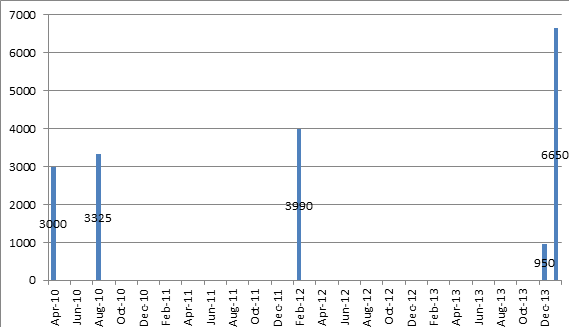
Compound annual growth rate of Waste Water equipment approax. statics:
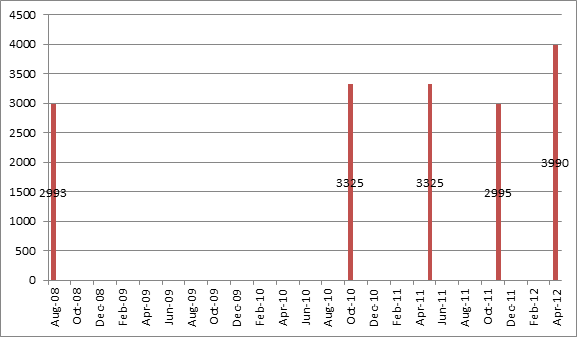
Water related disease approx. mortality per year:
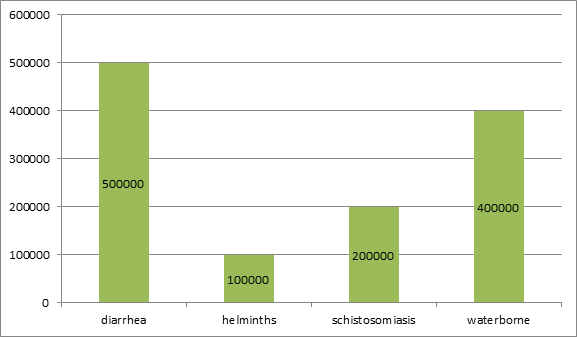
Conference Highlights
- Water Analysis
- Water Testing
- Water Microbiology
- Drinking Water
- Water Microbiology Indicator
- Sanitary importance Microbes
- Water and Excreta-Related Diseases
- Microbiology of Wastewater Treatment
- Water Borne Diseases
- Drinking Water Microbiology
- Water Management
- Bacterial Pathogens
- Emerging issue in Infectious Disease
- Bacteria in Drinking water
- Water safety
- Current Technology and Water Applications
- Treatment of waste water
- Water Sources & Reservoirs
- Exposure: Water Microbiology
- Bio-remediation: WATER
- Cyanobacteria-Toxins in Drinking Water
- Microbial ecology of oceans
- Water Microbiology: ecological approach
- Bio fouling: Water System
- Biofilms in drinking water systems
- Fresh water Microbiology
- Methods of water
- Fluoride in Water
- Pathogens in Aquatic-Related Environments
- Water Microbiology- Business Opportunities
- Microbial Population in Water system
- Entrepreneur Investments Meet: Description
- Water Parasitology
To share your views and research, please click here to register for the Conference.
To Collaborate Scientific Professionals around the World
| Conference Date | July 18-19, 2016 | ||
| Sponsors & Exhibitors |
|
||
| Speaker Opportunity Closed | Day 1 | Day 2 | |
| Poster Opportunity Closed | Click Here to View | ||
Useful Links
Special Issues
All accepted abstracts will be published in respective Our International Journals.
- Journal of Bacteriology & Parasitology
- Journal of Marine Biology & Oceanography
- Journal of Microbial & Biochemical Technology
Abstracts will be provided with Digital Object Identifier by










